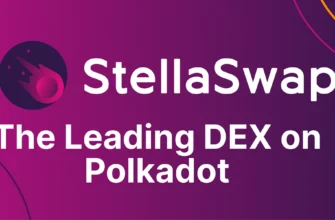What is Chainlink (LINK)?
Chainlink is a decentralized oracle network that connects smart contracts with real-world data. Launched in 2017 by Sergey Nazarov and Steve Ellis, Chainlink aims to solve one of the biggest problems in blockchain technology — the inability of smart contracts to interact with external data sources on their own.
The native cryptocurrency of the Chainlink network is called LINK. It’s used to pay node operators for retrieving data, validating it, and delivering it securely to smart contracts.
Why Do Smart Contracts Need Oracles?
Smart contracts — self-executing agreements with code — run on blockchains like Ethereum. While they’re secure and tamper-proof, they’re also isolated and can’t access off-chain information such as real-time prices, weather data, or sports scores.
This is where Chainlink’s oracles come in. Chainlink acts as a bridge between on-chain and off-chain systems, ensuring that smart contracts can securely interact with the outside world.
Key Features of Chainlink
- Decentralized Oracles: Unlike centralized oracles, Chainlink uses multiple nodes to verify data accuracy.
- Data Aggregation: Chainlink aggregates data from multiple sources to ensure reliability and accuracy.
- Cross-Chain Compatibility: Chainlink is blockchain-agnostic, working across multiple networks including Ethereum, BNB Chain, Polygon, and more.
- Secure and Tamper-Resistant: Chainlink uses cryptographic proofs and reputation systems to minimize the risk of data manipulation.
How Does Chainlink Work?
- Requesting Data: A smart contract requests external data (e.g., ETH/USD price).
- Chainlink SLA: The request is converted into a Service Level Agreement (SLA), defining parameters such as number of nodes.
- Node Selection: Chainlink selects oracles to fulfill the data request.
- Data Reporting: The oracles fetch data from external sources.
- Aggregation: Chainlink aggregates the results to produce a final, reliable answer.
- Delivery: The data is delivered to the smart contract.
Use Cases of Chainlink
- DeFi Protocols: Platforms like Aave, Synthetix, and Compound use Chainlink price feeds.
- Insurance: Smart contracts can automate insurance payouts based on weather or flight data.
- Gaming: Chainlink provides verifiable randomness for in-game mechanics and NFTs.
- Enterprise Solutions: Companies like Google Cloud have explored Chainlink for secure data delivery.
Pros of Chainlink (LINK)
✅ Decentralization: Minimizes the risk of single-point failures.
✅ Strong Partnerships: Collaborations with leading blockchain projects and enterprises.
✅ High Security: Uses cryptographic proofs and decentralized validation.
✅ Growing Adoption: Widely used in DeFi, gaming, and real-world applications.
✅ Developer-Friendly: Extensive documentation and flexible APIs.
Cons of Chainlink (LINK)
❌ High Competition: Other oracle projects like Band Protocol and API3 are growing fast.
❌ Gas Fees: Operating on Ethereum can be costly due to high gas fees.
❌ Centralization Concerns: Some critics argue a few large node operators dominate the network.
❌ Price Volatility: LINK, like most cryptocurrencies, can be highly volatile.
Is LINK a Good Investment?
As always, investing in cryptocurrencies comes with risk. However, Chainlink’s strong fundamentals, real-world utility, and expanding ecosystem make it a project worth watching. Always do your own research (DYOR) before making financial decisions.
Final Thoughts
Chainlink is more than just another crypto project — it’s a critical infrastructure layer for the blockchain ecosystem. By solving the “oracle problem,” Chainlink enables smart contracts to interact with real-world data securely and reliably. With widespread adoption in DeFi and beyond, LINK is well-positioned to play a major role in the future of Web3.
Whether you’re a developer, investor, or simply curious about crypto, understanding Chainlink is essential in grasping the future potential of decentralized technologies.








